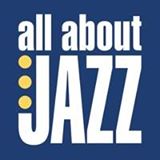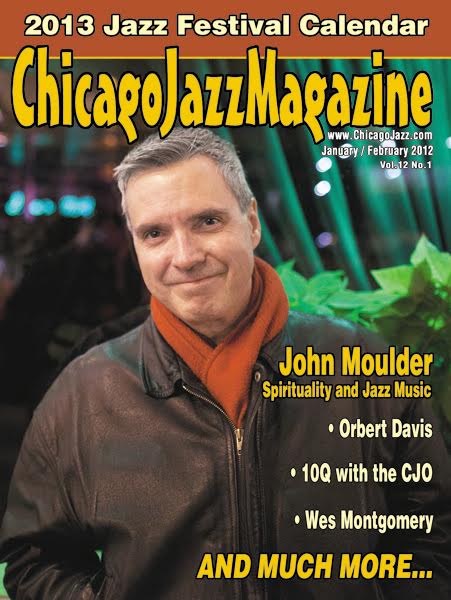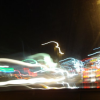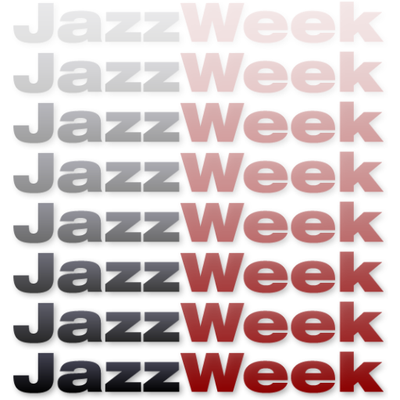CD Reviews
Earthborn Tales of Soul and Spirit (2016):

In a holiday season when musical treacle is practically unavoidable on the airwaves and in shopping malls, it's comforting to know there's an alternative.
For though Chicago guitarist John Moulder's newest recording, "Earthborn Tales of Soul and Spirit," wasn't conceived as holiday fare, it addresses spirituality in far deeper ways than we're accustomed to hearing at this time of year.
So, no, you won't hear the great Chicago guitarist-bandleader offering his take on "Jingle Bells," "Santa Baby" or "It's the Most Wonderful Time of Year." But his album comes as a balm to ears that yearn for something more.
Fashioned as a vast jazz tone poem — complete with what amounts to an overture, three mini-suites and an ennobling final
...more
In a holiday season when musical treacle is practically unavoidable on the airwaves and in shopping malls, it's comforting to know there's an alternative.
For though Chicago guitarist John Moulder's newest recording, "Earthborn Tales of Soul and Spirit," wasn't conceived as holiday fare, it addresses spirituality in far deeper ways than we're accustomed to hearing at this time of year.
So, no, you won't hear the great Chicago guitarist-bandleader offering his take on "Jingle Bells," "Santa Baby" or "It's the Most Wonderful Time of Year." But his album comes as a balm to ears that yearn for something more.
Fashioned as a vast jazz tone poem — complete with what amounts to an overture, three mini-suites and an ennobling final statement — "Earthborn Tales of Soul and Spirit" shows Moulder addressing profound questions on the meanings of life and afterlife. Without lyrics or storyline or any words other than the titles of the compositions, Moulder takes us into a realm of contemplation, struggle and reverie.
Granted, if you didn't know the name of his three-movement "Journey to the East" or his two-part "Soul in Twilight," you might not decode the specific messages Moulder wants to convey. But the questing nature and musical heft of this work are unmistakable, and they become even more so when he explains his purposes.
For Moulder created "Earthborn Tales" as a series of portraits of individuals who have inspired him — and millions of others.
"I thought it would be a cool idea to express some things about people who demonstrated a lot of soulfulness or an inspired way of being," says Moulder, who was commissioned to write "Earthborn Tales" by the Jazz Institute of Chicago and performed it in Millennium Park in 2014.
"So that got the wheels turning: Maybe I have a particular way of looking at soul and spirit," adds Moulder, who had worked as a Catholic priest but recently stepped aside from the ministry.
"I looked at soul as something from the depth and spirit as more transcendent — more from the heights, or if you want to imagine it as sky. I wanted to look at people who inspired me in either of those dimensions and compose music from it."
So the recording opens with "Earthborn Tales," a kind of curtain-raiser for the music yet to come, Moulder joined by several of Chicago's most accomplished jazz musicians, plus guest saxophonist Donny McCaslin (best known these days for his work on David Bowie's "Blackstar" recording).
The sprawling melody lines and wide-open textures that open "Earthborn Tales" set the stage for several intriguing musical portraits, starting with the aforementioned "Journey to the East." Its incantatory first section, lush orchestral second movement and ethereal finale tell a particular tale.
"The 'Journey to the East' was to commemorate Thomas Merton's last journey, right before he died," says Moulder, referring to the Catholic author and political activist who died in 1968 in Bangkok.
"I found him such an interesting figure. He was this Christian mystic, an eloquent spiritual writer, but he really opened up so much in the end of his life to other religions, other spiritualities, where he really found a kinship that was profound for him.
"So the first part (of 'Journey to the East') is about the excitement of (his) going over to India. The second part is really about the end of his life. … And the third part is a kind of intimation of life beyond."
So it goes throughout the "Earthborn Tales" album, Moulder regarding the lives of notable figures as starting points for jazz composition and improvisation.
Some of Moulder's most poetic expression emerges in the two-part "Ruby's Way," which addresses the terrors and trauma Ruby Bridges suffered as the only African-American child to attend an otherwise all-white school in New Orleans in 1960. She had to be accompanied by federal marshals, and she and her family were subjected to abuse and isolation.
In the first movement, Marquis Hill's lone, pensive trumpet lines signify Ruby's solitary first months in the school. But in the closing section, Moulder's rhythmically surging music sums up the triumph for which Ruby and her family paid so dearly.
"She was treated so poorly and, in some ways, so cruelly," says Moulder.
"But her ability to walk that walk, with such grace and spirit and inner strength that would be unimaginable — just the fact that she could do it was amazing," he adds of a moment immortalized in Norman Rockwell's painting "The Problem We All Live With."
Moulder fashioned his "Ruby's Way" suite so that in "the beginning of it, I wanted it to be sad, almost dirgelike, to convey the sorrow, the darkness and the sense of walking alone, even though she did have a couple of federal marshals accompanying her. But that walk — I was just imagining it.
"The second part I was looking to portray, musically anyway, this sense of her indomitable human spirit, and the way civil rights was moving forward and not turning back."
"Earthborn Tales" overflows with such storytelling, but its eloquence and musical imagination will come as no surprise to anyone who has followed Moulder's work. The joyousness he communicated in "The Eleventh Hour: Live at the Green Mill" (2012), the sense of serenity he conjured in "Bifrost" (2009) and the religious-philosophical discourse he undertook in "Trinity" (2006) point to an artist of remarkable depth of thought and feeling.
In "Farther Reaches," the closing piece on "Earthborn Tales," Moulder pays homage to a revered jazz musician whose contemplations of the divine opened a door for Moulder and uncounted others: John Coltrane.
"Someone should be cautioned (about doing) John Coltrane, because only John Coltrane can do that," says Moulder, whose soaring electric guitar solos in this movement nonetheless suggest that he found a path of his own.
For "Farther Reaches" stands as a rewarding close to the entire venture, another significant contribution from a singular Chicago jazz artist.
The Eleventh Hour (2011):

The Eleventh Hour just came out the other week and arrived on my doorstep today. And it’s nothing short of thrilling. For me, the best of the year so far. Moulder is an extraordinarily talented guitarist.
-William Harmless, All About Jazz

New York City may be where jazz musicians go to seek stardom, but Chicago is no Second City for those looking to work. That lesson's clear to guitarist John Moulder, who teaches at nearby Northwestern University (where he earned a master's in music) and has crafted a 20-year recording career, culminating in the banner work on "The Eleventh Hour: Live at the Green Mill.".... a deft, broad-shouldered performance that matches anything the Big Apple has to offer.
-Bill Meredith, Jazziz Magazine

The Eleventh Hour: Live At The Green Mill features guitarist John Moulder showcasing his original compositions with a stunning quintet. To put it succinctly, this recording represents modern jazz at its best. Moulder's compositions are amazingly creative and stimulating, taking fascinating twists and turns and also giving his talented bandmates the freedom to explore and take his pieces in unexpected musical directions.
-Dan Healy, Chicago Jazz Magazine

Though John Moulder has been recording and performing for twenty years now, his name recognition hasn’t risen to that of the top ranks of jazz guitarists. It really should. No exaggeration. His most recent album, The Eleventh Hour: Live at the Green Mill, is proof of that. Apparently the result of serendipity, the album exists because recording engineer Ken Christianson suggested recording Moulder’s quintet at Chicago’s Green Mill during a scheduled engagement. First of all, kudos to Christianson for a fine job of sound engineering, catching the nuances of tone, the crispness of articulation and the cohesiveness of interaction, even while recording crowd response at the end of each piece. For that reason alone, The Eleventh Hour represents an excellent
...more
Though John Moulder has been recording and performing for twenty years now, his name recognition hasn’t risen to that of the top ranks of jazz guitarists. It really should. No exaggeration. His most recent album, The Eleventh Hour: Live at the Green Mill, is proof of that. Apparently the result of serendipity, the album exists because recording engineer Ken Christianson suggested recording Moulder’s quintet at Chicago’s Green Mill during a scheduled engagement. First of all, kudos to Christianson for a fine job of sound engineering, catching the nuances of tone, the crispness of articulation and the cohesiveness of interaction, even while recording crowd response at the end of each piece. For that reason alone, The Eleventh Hour represents an excellent live album. Blending performance and reaction into a memorable synthesis, the album adds another level of excitement to compositions that have appeared on Moulder’s previous CD’s. But the music itself, live or in a studio, distinguishes the project. Moulder plays with experienced confidence, not only altering technique to achieve effect, but also creating mood. Whether bending or distorting tone or playing with acoustic clarity, Moulder pulls in the audience with his heightening layers of dynamism. Also, Moulder works with like-minded musicians who share his vision and his sound. All but saxophonist Geof Bradfield have worked with Moulder on previous projects, but still Bradfield contributes sonic depth and naturalistic verisimilitude on bass clarinet. The quintet does perform as a single unit, achieving a totality of effect that transcends that of a single instrument. While Moulder is setting the stage for a narrative-like creation with his haunting reverb and ethereal melody for “Creation,” Larry Gray grounds the motion with his steady but understated bass lines. Though playing another chorded instrument, pianist Jim Trompeter has adapted his technique to complement Moulder’s by splashing broad chords from both hands to add color and harmonic density as the guitarist solos on, say, “Cold Sea Triptych.” Moulder’s style and Moulder’s group are fully developed and achieve instantaneous audience response to a modally oriented composition in five-four like “African Sunset.” “Eleventh Hour” too proceeds in stately, deliberate, forceful fashion from modal improvisational opportunities in moderatetempo groups of eleven beats. Not an experiment nor cleverness, “Eleventh Hour” nonetheless grips the audience with passionate expressiveness. “Magical Space” investigates the nooks and crannies of beauty as Moulder develops a fully realized haunting musical story line, once again embellished by Trompeter’s tidal chords and drummer Paul Wertico’s accents from brushed cymbals. And speaking of Wertico, in whose groups Moulder has participated for over fifteen years, the spontaneity of the exchange of ideas between them is particularly noticeable—and engaging. “Time Being” starts relatively simply with Bradfield stating the singable melody without elaboration; Wertico’s rustling and bridled energy becomes evident under Bradfield’s long tones as if Wertico is waiting to be released. Suspicions set up by Wertico’s foreshadowing are confirmed as the simplicity dissolves to reveal the underlying force, unbridled when, satisfyingly (to the crowd’s yelps and applause), Wertico solos midway through the track. All drumming breaks loose. Wertico’s solo becomes the track’s fulcrum, initially unsuspected by the audience, as singsong evolves into dynamism. The ironic contrasts within “Time Being”—melodic ease against restrained force, introductory singability against rock-like final intensity—are but one example of Moulder’s shrewd compositional imagination. Combined with like-minded first-rate musicians and the thrill of constant bursts of surprise, The Eleventh Hour: Live at the Green Mill overflows with memorable moments available now to a broader listening audience.

Whereas many of Chicago's jazz and blues guitar icons seem to channel the dark alleys and the bar sign neon of the city through their instruments, John Moulder's sound is more akin to a synthesis of the lakefront—a beauty and serenity that is just as likely to show a face of fury and cold precision. For some time now, Moulder has quietly been developing his sound into something quite unique. The Eleventh Hour provides the opportunity to hear it in a live setting.
Recorded at the celebrated jazz venue, Chicago's Green Mill, Moulder presents a set of tunes culled from past albums. But while past studio albums like Bifrost (Origin, 2009) and Trinity (Origin, 2006) were laced with atmospheric effects,
...more
Whereas many of Chicago's jazz and blues guitar icons seem to channel the dark alleys and the bar sign neon of the city through their instruments, John Moulder's sound is more akin to a synthesis of the lakefront—a beauty and serenity that is just as likely to show a face of fury and cold precision. For some time now, Moulder has quietly been developing his sound into something quite unique. The Eleventh Hour provides the opportunity to hear it in a live setting.
Recorded at the celebrated jazz venue, Chicago's Green Mill, Moulder presents a set of tunes culled from past albums. But while past studio albums like Bifrost (Origin, 2009) and Trinity (Origin, 2006) were laced with atmospheric effects, it's a thrilling experience to hear the blistering heat and cool grace of his guitar undiluted by studio mechanics and effects.
For this show, Moulder leads a quintet of pros that includes saxophonist/bass clarinetist Geof Bradfield and past Pat Metheny Group alum, drummer Paul Wertico. The five of 'em sound like they've been performing together since they were wee tots. No better proof of that can be found than on the album's closing track, "Time Being," where a hypnotic opening of circular interplay between Molder and pianist Jim Trompeter leads to a series of solos that build atop one another, peaking with a surge of electricity that explodes with the final notes. It's one of those rare occurrences that a song is truly deserving of the descriptor "magical."
For a live recording, the audio quality is rock solid. When the inevitable sounds of the venue do hit the audio, they serve to enhance the listening experience rather than detract from it. Live, the heart of Moulder's sound beats large, and he brings the show straight to the speakers of anyone who listens, as if seated in a booth at the Mill the night it all went down.
Bifröst (2009):

Top 10 Innovative Jazz Releases of 2009
For the past 20 years or so, excellent guitarists have been plentiful in Chicago, and Moulder ranks high among them. On "Bifrost," he offers some of the most profound work of his career, alternating vastly scaled tone poems with exquisitely delicate, spiritual pieces. His work only deepens with time.
-Howard Reich, Chicago Tribune

A longtime member of ex-Pat Metheny Group drummer Paul Wertico's trio, enough has already been written about John Moulder's double life as jazz guitarist and ordained priest. Bifröst is Moulder's follow-up to the ambitious and eclectic Trinity (Origin, 2006), where the guitarist's spirituality became a touchstone for music ranging from the ethereal to the grounded, and from elegant folklore to potent, angst-driven fusion. What makes Bifröst even more satisfying is its narrowing of focus down from a larger cast of characters to a quintet, bringing together old friends Wertico and fretless electric bassist Brian Peters with new Norwegian ones, double-bassist Arild Andersen and saxophonist Bendik Hofseth.
That Andersen collaborated, early in his career, with Terje Rypdal makes this transatlantic first
...more
A longtime member of ex-Pat Metheny Group drummer Paul Wertico's trio, enough has already been written about John Moulder's double life as jazz guitarist and ordained priest. Bifröst is Moulder's follow-up to the ambitious and eclectic Trinity (Origin, 2006), where the guitarist's spirituality became a touchstone for music ranging from the ethereal to the grounded, and from elegant folklore to potent, angst-driven fusion. What makes Bifröst even more satisfying is its narrowing of focus down from a larger cast of characters to a quintet, bringing together old friends Wertico and fretless electric bassist Brian Peters with new Norwegian ones, double-bassist Arild Andersen and saxophonist Bendik Hofseth.
That Andersen collaborated, early in his career, with Terje Rypdal makes this transatlantic first encounter all the more successful, given that Moulder's visceral, overdriven and often whammy bar-centric electric playing is unmistakably influenced by the Norwegian guitar legend. And while he certainly possesses his own voice, the sound of another Norwegian notable and early Andersen cohort, saxophonist Jan Garbarek, is an equal touchstone in Hofseth's tone and approach.
Here, Moulder's high energy electric is juxtaposed and combined with six- and twelve-string acoustic guitars to to create a context that hints, in some ways, back to Ralph Towner and Solstice (ECM, 1975). Bifröst's opening title track, in fact, speaks deeply of Towner's harmonic language and, with Wertico's light cymbal work and Hofseth's soaring lines, could easily fall into similar territory were it not for Andersen's in-the-gut double-bass and Moulder's searing electric solo. Moulder's serpentine melody weaves around ambiguous harmonies, as the piece builds dramatically—and inevitably.
Moulder may drive some of Bifröst with hard-edged electricity, but he's also capable of softer lyricism; his solo acoustic intro to the ultimately more buoyant "Watch Your Step"—where his acoustic melody is bolstered in strong, lilting unison by Hofseth and Peters— sounding like an outtake from Metheny's One Quiet Night (Nonesuch, 2003). "Echoes of Home," driven gently by Wertico's percussion, is another acoustic feature, with Moulder recalling Windham Hill's Alex DeGrassi, but with greater depth.
Andersen's remarkable combination of deep, resonant tone and lithe dexterity is a fundamental throughout the disc, with his solo intro to "Magical Space" a highlight as he builds phrase-after-phrase over a looped chordal wash. Once the group enters, setting a dark context for solos by Moulder (again, on acoustic) and Hofseth, its temporal elasticity recalls ECM classics like Bill Connors' Of Mist and Melting (1978). Wertico's restraint here is as impressive as his more powerful bent on the closing part of Moulder's episodic "Time Being," a 15-minute epic that ends with a repeating series of ascending chords, bringing the album to a strong and definitive close.
Quietly, and with little fuss, Moulder has built his voice as writer and performer, and a rare ability to conceptualize broader narratives. With Bifröst he leverages Trinity's ambitious nature into an album that may appear smaller in focus, but is ultimately even more expansive in overall sound, vision and chemistry.
Track Listing: Bifröst; Watch Your Step (introduction); Watch Your Step; Magical Space (introduction); Magical Space; Echoes of Home; Cold Sea Triptych: Part 1; Cold Sea Triptych: Part 2; Cold Sea Triptych: Part 3; Time Being.
Personnel: John Moulder: electric guitars, 12-string and 6-string acoustic guitars; Bendik Hofseth: tenor saxophone; Arild Andersen: double-bass; Paul Wertico: drums, percussion; Brian Peters: electric fretless bass, programming.
Trinity (2006):

John Moulder of Chicago spent five years composing the material for his album Trinity. It's an epic three-part program inspired by religious belief, but it can be appreciated on any number of levels. The sound of the recording is tremendous, as are the performances...Moulder impresses with his harmonic imagination and sheer ambition. The orchestrations are varied and fine-grained, not to mention expertly produced by Moulder and Brad Peters...to these ears it is probing and kaleidoscopic.
-David Adler, Jazz Times

There is a small but long-standing tradition of jazz informed by faith, whether it's a Gospel-influenced tune, or more expansive spiritual pieces like the sacred works of Duke Ellington or Coltrane's "A Love Supreme." Guitarist and composer John Moulder has communicated his personal faith in a suite entitled Trinity, which is his musical interpretation of "our journey in God from the primordial to the eternal." Moulder chronologically follows that trek, with the suite's genesis in the frenetic "Chaos." That movement is followed by the peaceful mood of "Creation" and a jaunty, 5/4 "Exodus." On electric and acoustic guitars, he traces other feelings of the familiar biblical narrative through an uptempo "Proclamation of the Unexpected," an uplifting "Resurrection" and a bluesy
...more
There is a small but long-standing tradition of jazz informed by faith, whether it's a Gospel-influenced tune, or more expansive spiritual pieces like the sacred works of Duke Ellington or Coltrane's "A Love Supreme." Guitarist and composer John Moulder has communicated his personal faith in a suite entitled Trinity, which is his musical interpretation of "our journey in God from the primordial to the eternal." Moulder chronologically follows that trek, with the suite's genesis in the frenetic "Chaos." That movement is followed by the peaceful mood of "Creation" and a jaunty, 5/4 "Exodus." On electric and acoustic guitars, he traces other feelings of the familiar biblical narrative through an uptempo "Proclamation of the Unexpected," an uplifting "Resurrection" and a bluesy shuffle with the ending "Freedom." With a range of feelings that mirror that of the stories of the Judeo-Christian tradition, Moulder and guests including Laurence Hobgood, Paul Wertico and Paul McCandless have created a work of musical and spiritual beauty.

Sacred music does not typically unfold in gritty jazz clubs.
But considering that the headliner at the Green Mill over the weekend was a Catholic priest, the rarefied choice of material seemed thoroughly appropriate.
Though guitarist John Moulder has been performing and recording steadily here for the past couple of decades, he achieved an artistic high point in 2006 when he released "Trinity" (Origin Records). Like Duke Ellington's Sacred Concerts and John Coltrane's "A Love Supreme," Moulder's "Trinity" addressed themes of faith and divinity, in a jazz context.
This often exalted music dominated Moulder's first set Friday night, a fine choice considering the holiday season that approaches.
In "Trinity," Moulder explores the deepest themes imaginable. Movements such as "Chaos," "Creation"
...more
Sacred music does not typically unfold in gritty jazz clubs.
But considering that the headliner at the Green Mill over the weekend was a Catholic priest, the rarefied choice of material seemed thoroughly appropriate.
Though guitarist John Moulder has been performing and recording steadily here for the past couple of decades, he achieved an artistic high point in 2006 when he released "Trinity" (Origin Records). Like Duke Ellington's Sacred Concerts and John Coltrane's "A Love Supreme," Moulder's "Trinity" addressed themes of faith and divinity, in a jazz context.
This often exalted music dominated Moulder's first set Friday night, a fine choice considering the holiday season that approaches.
In "Trinity," Moulder explores the deepest themes imaginable. Movements such as "Chaos," "Creation" and "Resurrection" attest to the breadth of the composer's vision and the intellectual rigor of his best work.
If the soaring melodic lines and unstoppable rhythmic sway of "Creation" established the quality of Moulder's writing, the music that followed underscored his gifts as improviser.
Even when Moulder was playing full-tilt, producing fast-flying lines of considerable complexity, the easy flow of his ideas and luster of his sound were unmistakable.
When Moulder and his quartet ventured into the climactic "Freedom" movement of "Trinity," the musicmaking took on a New Orleans hue. Its second-line parade rhythms and feverish blues exhortations underscored Moulder's message: that all-American jazz can express divine aspirations as eloquently as any genre (if not more so).
Among the evening's other highlights was a newly penned ballad, "About Us," for which Moulder put down his electric guitar and went acoustic. Who would have guessed that a guitarist who pours so much fire-and-brimstone into his plugged-in work could also play with such sensitivity and grace?
In this piece, and others, Moulder benefited from the work of Chicago drummer-percussionist Paul Wertico, whose keen sense of time and color distinguish him from most of his peers.

In some ways in a similar vein as Duke Ellington's Sacred Music, John Moulder here creates a set of his own inspirational jazz. The performances are exquisite, with sensitive performances on all instruments. The mood is contemplative, meditative, as one would probably expect. Moulder's guitar strums out only what it needs to, with Laurence Hobgood's piano in tandem. Others often take on the temporary role of lead, with a soft run on the trumpet or sax playing out the main melody. The compositions are careful, tentative, but almost more literal than one would expect in the jazz world. Chaos, the opening track, builds from a quiet nothingness (primordiality) to a clashing finish. Creation builds methodically, with what seem to be
...more
In some ways in a similar vein as Duke Ellington's Sacred Music, John Moulder here creates a set of his own inspirational jazz. The performances are exquisite, with sensitive performances on all instruments. The mood is contemplative, meditative, as one would probably expect. Moulder's guitar strums out only what it needs to, with Laurence Hobgood's piano in tandem. Others often take on the temporary role of lead, with a soft run on the trumpet or sax playing out the main melody. The compositions are careful, tentative, but almost more literal than one would expect in the jazz world. Chaos, the opening track, builds from a quiet nothingness (primordiality) to a clashing finish. Creation builds methodically, with what seem to be references to 2001: A Space Odyssey and the moment of the monolith. Incarnation is particularly gentle, but with a touch of sadness. The music of the various mysteries gods directly for the exotic sound, with udu and berimbau enlisted to aid in the transition. Resurrection involves a Weather Report-like buildup, with cheer and power intertwined. It's a fine album musically, but almost exactly what one might expect if told only that it was inspirational jazz.
